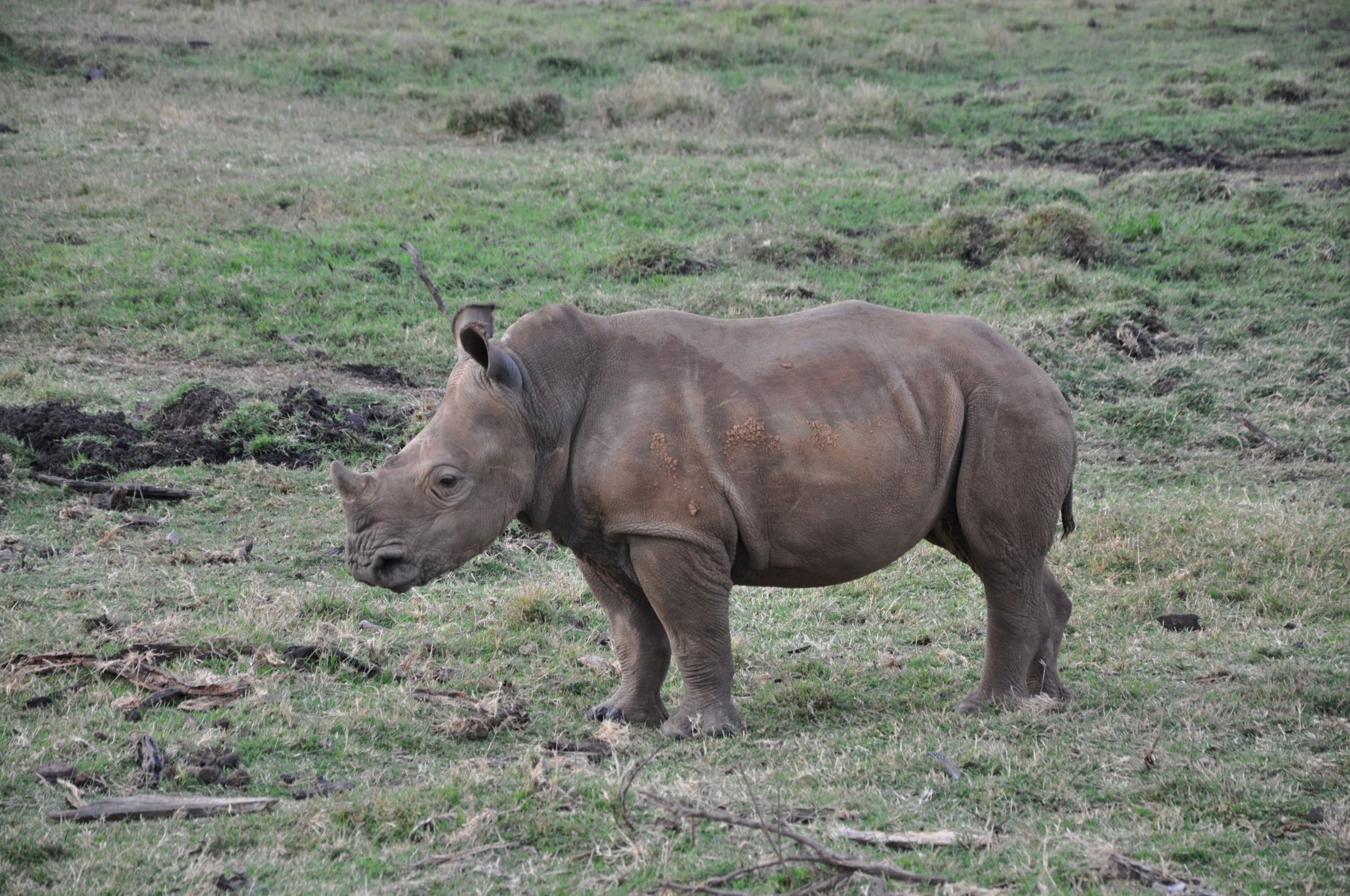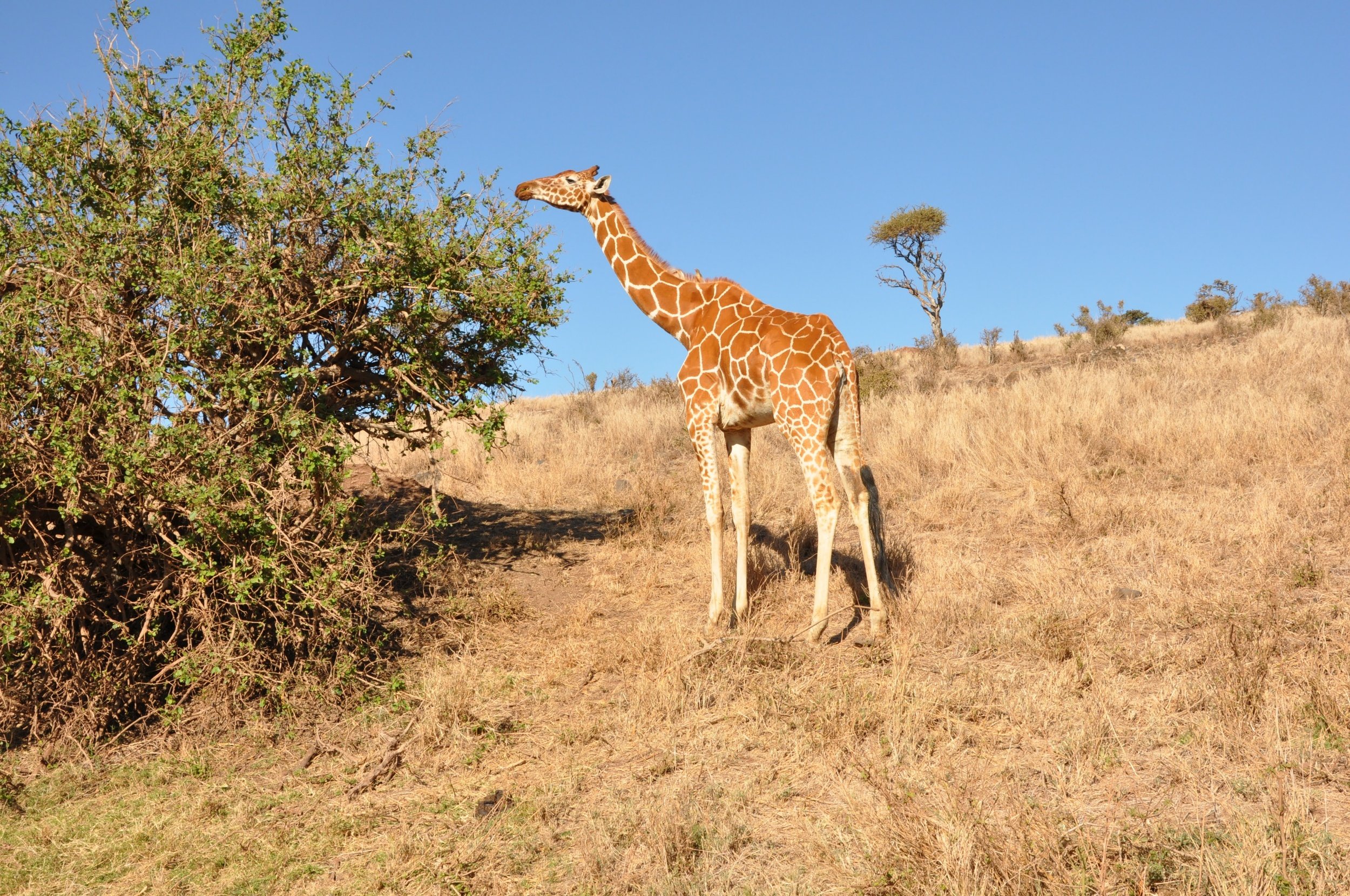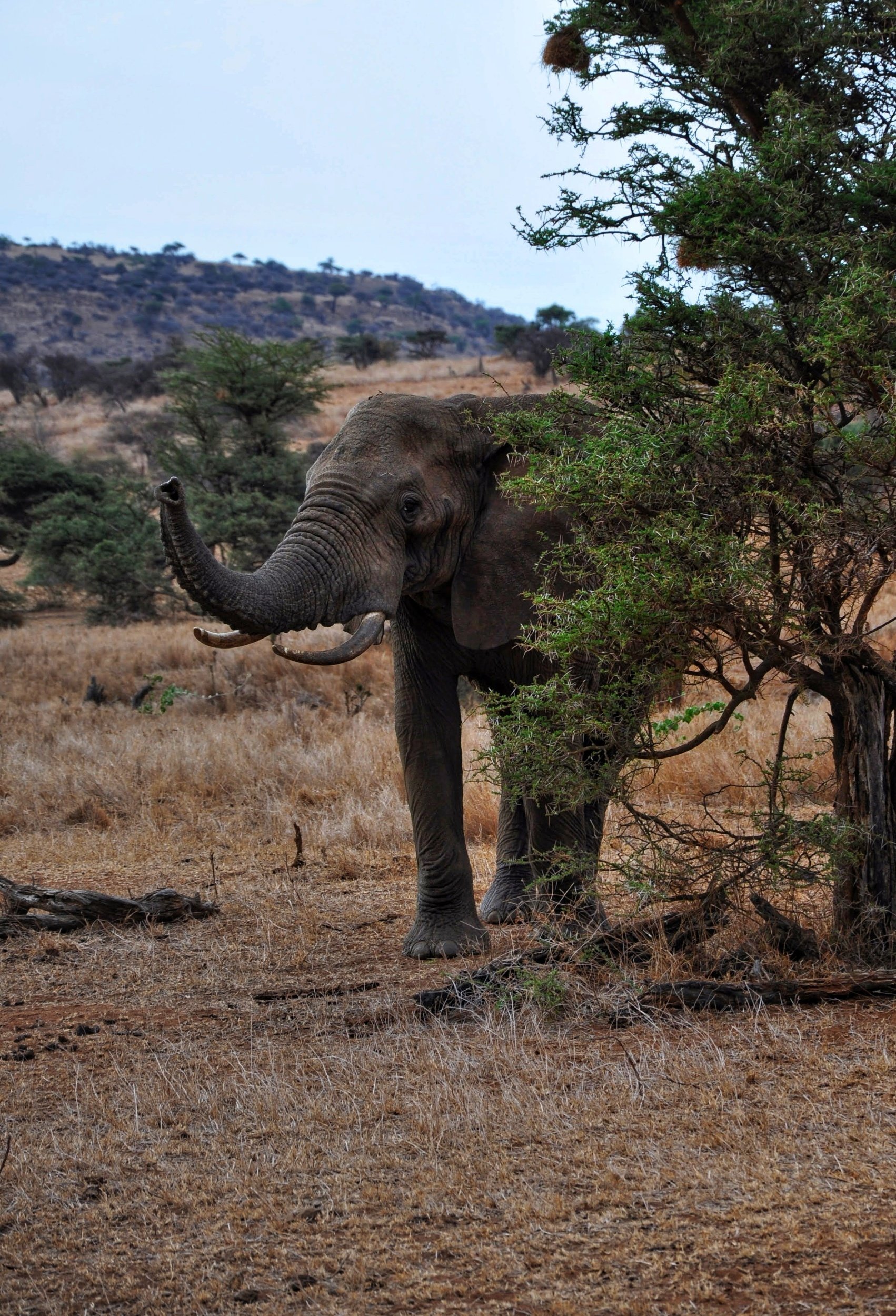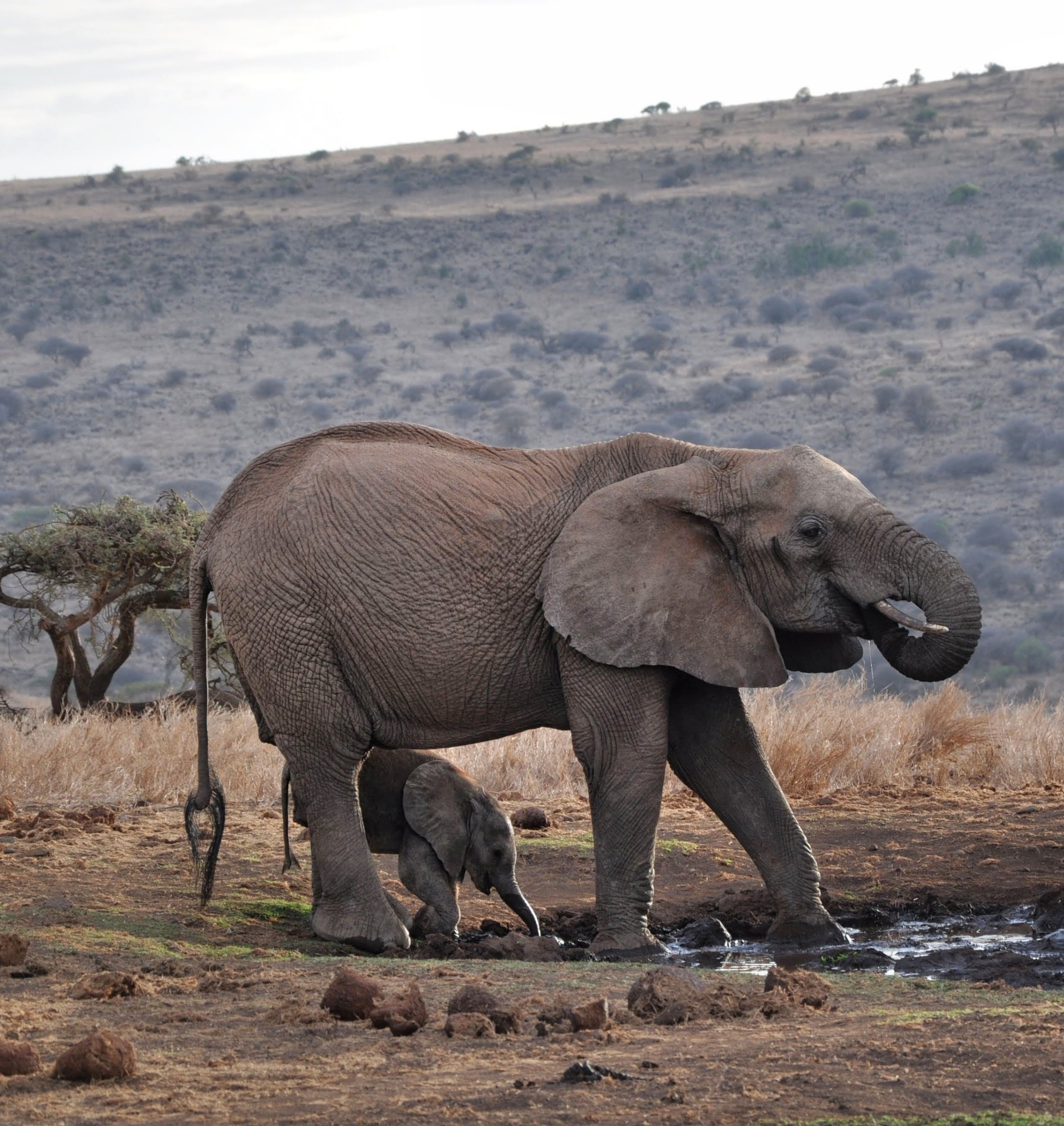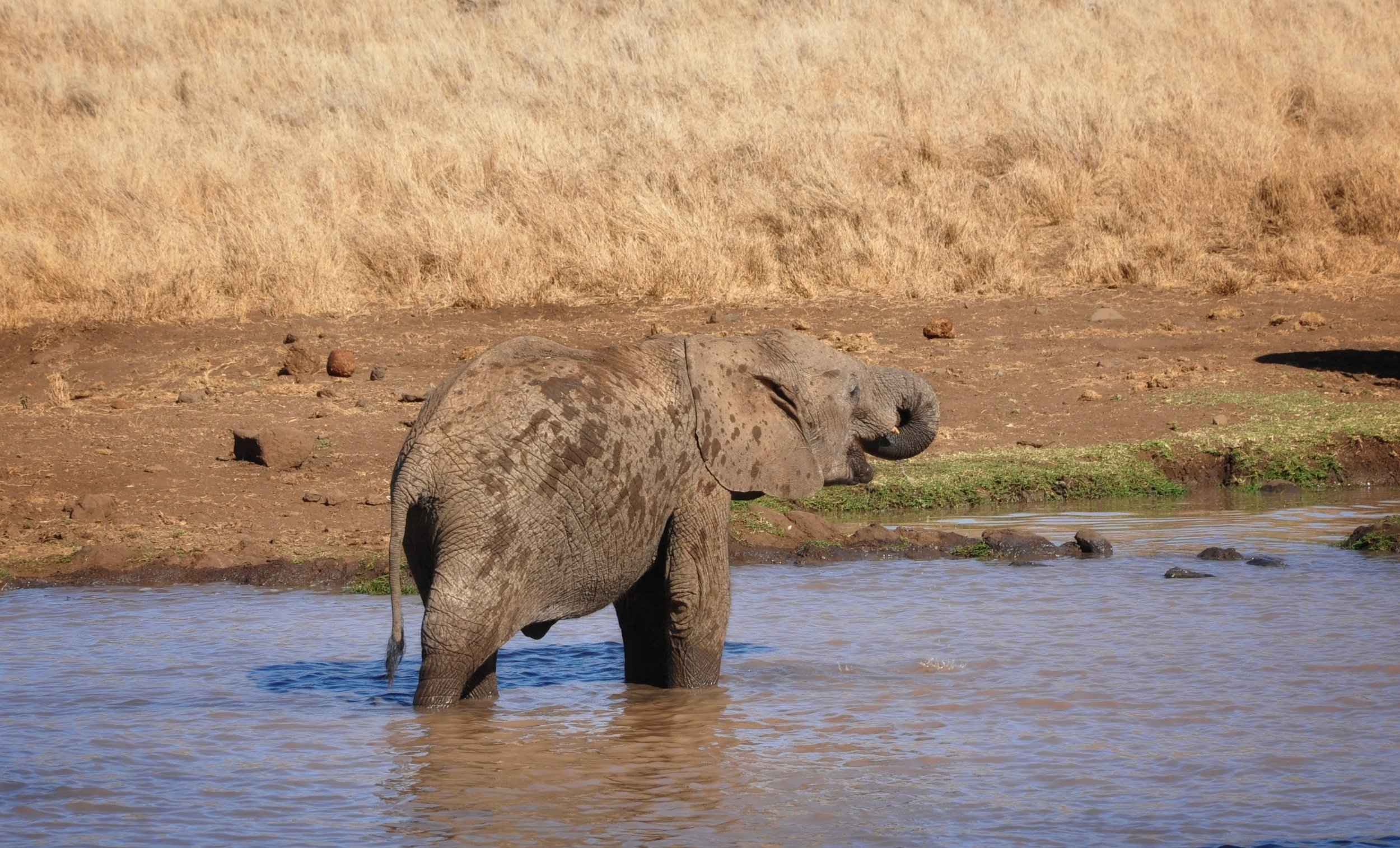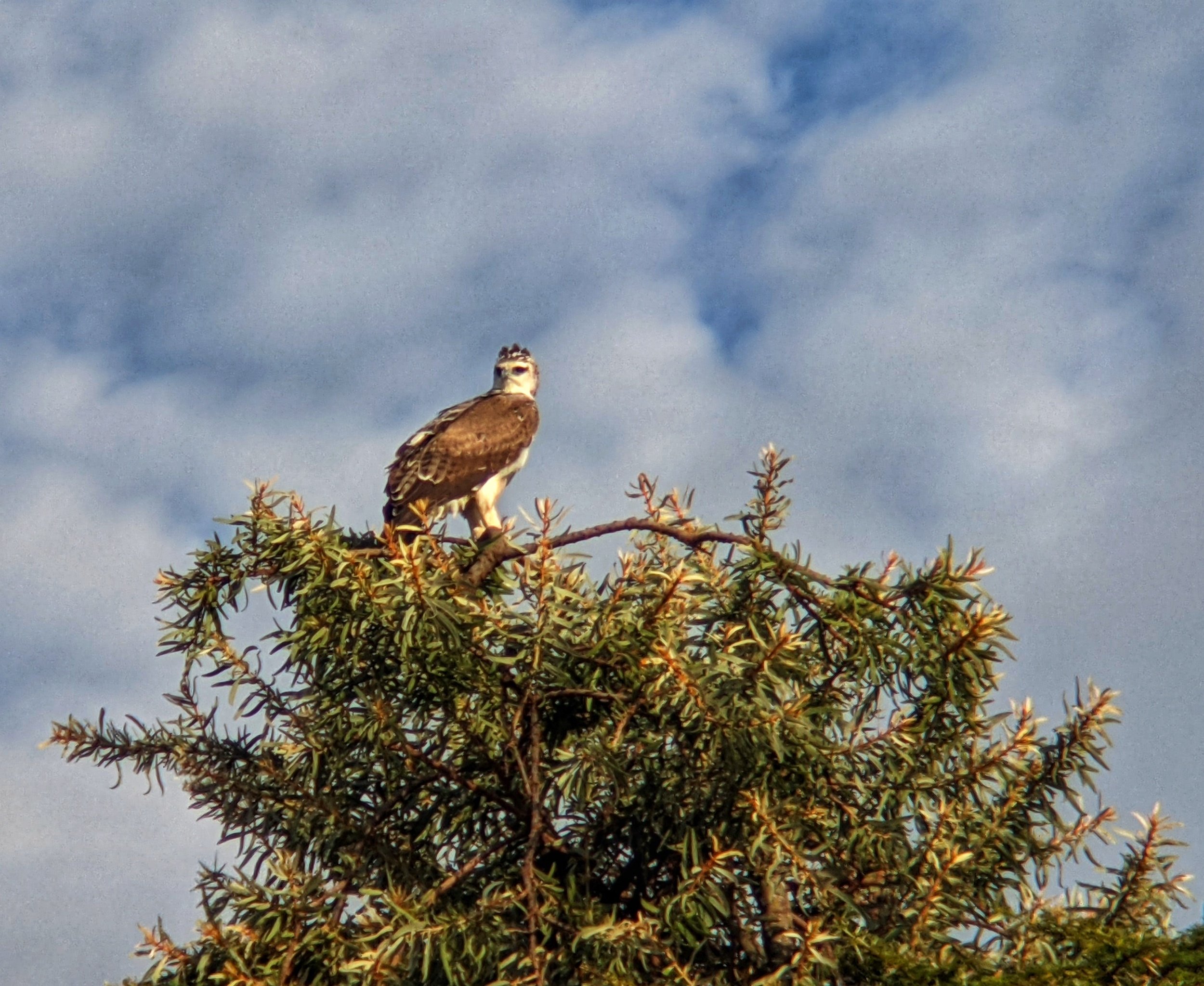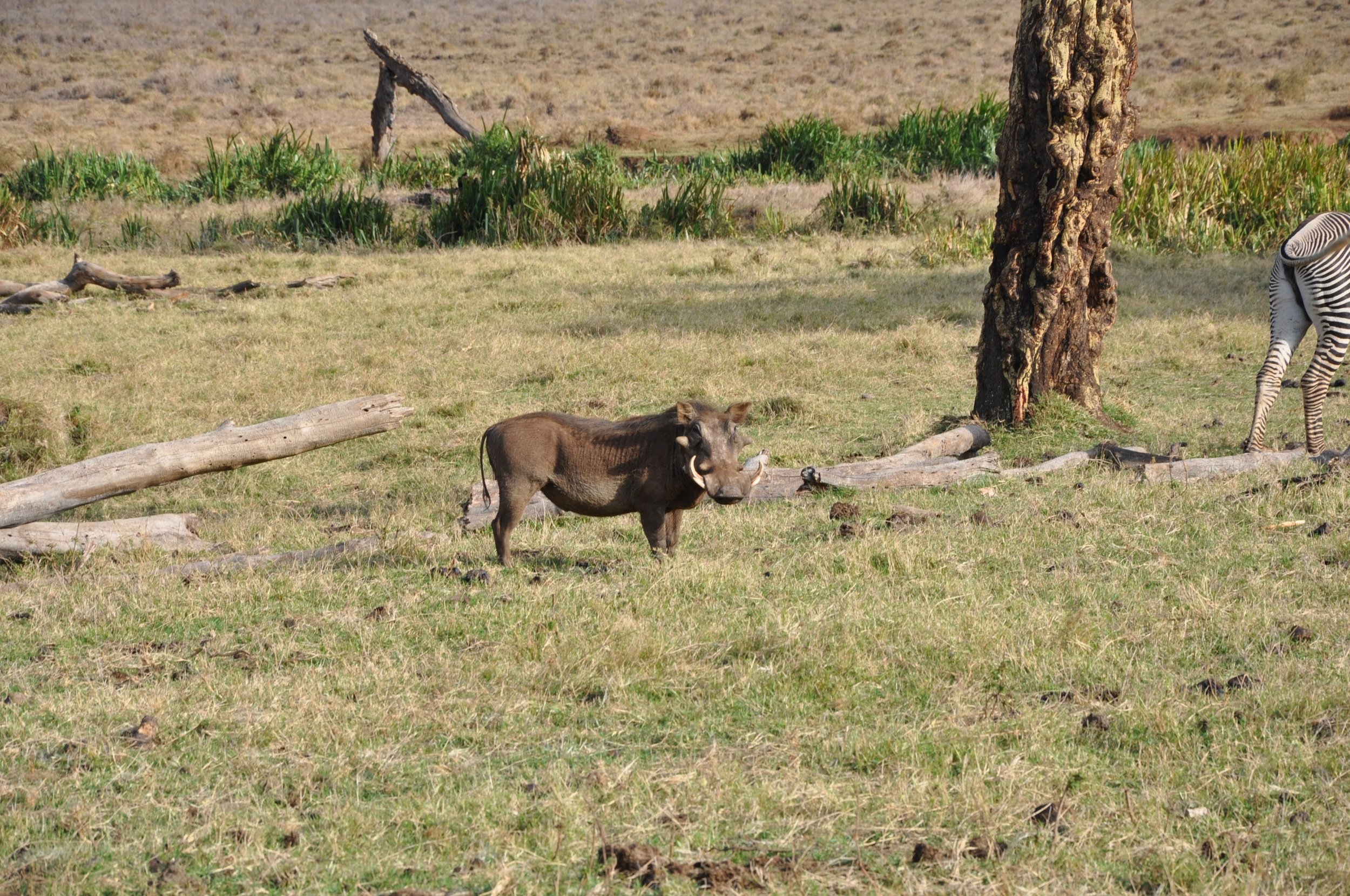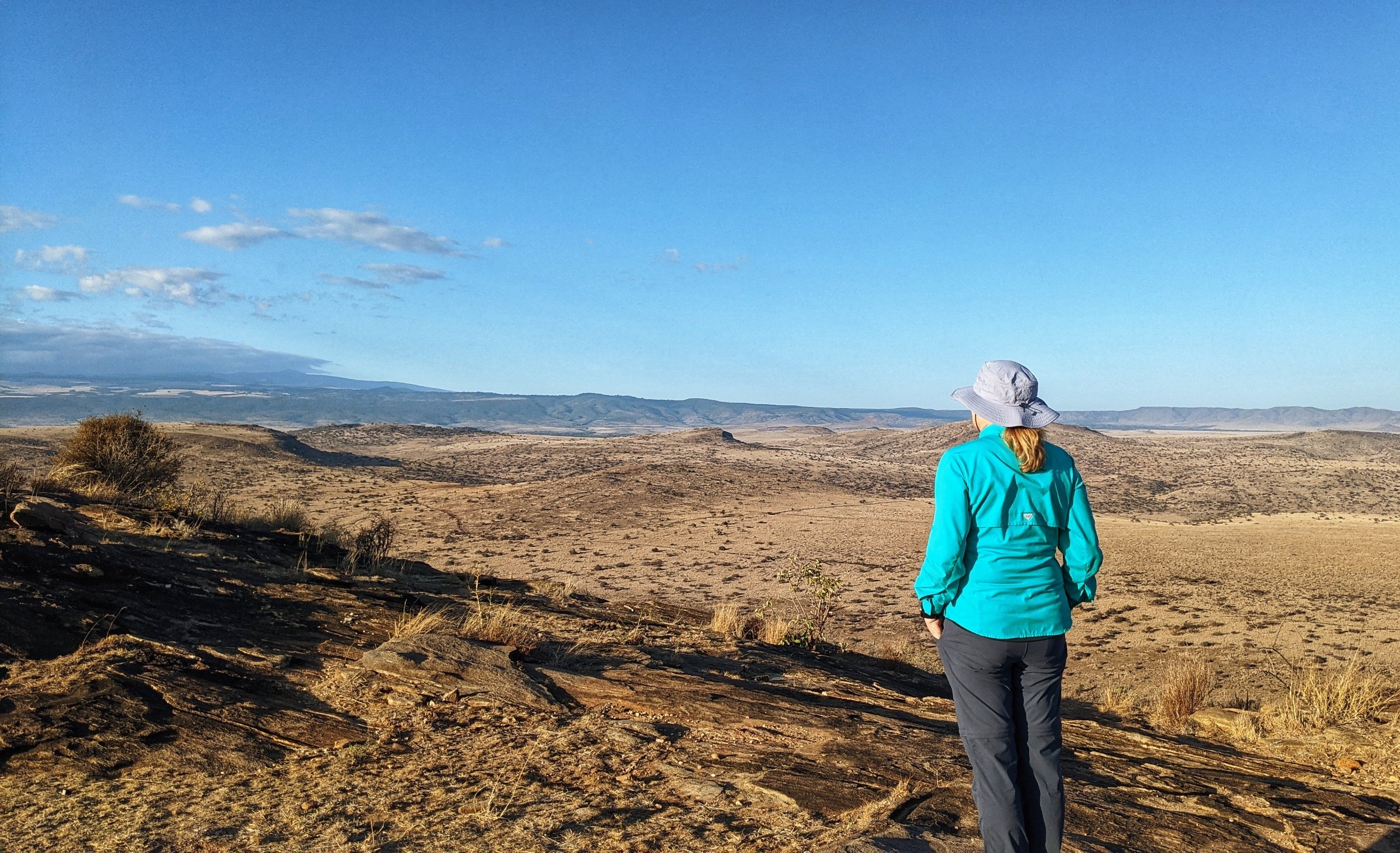Kenya: The Lewa Conservancy
We were sad to leave Rwanda, but excited for our next stop: The Lewa Conservancy. Lewa is known for its rhino population, both black and white. This would be my mom and Kel's first “real” safari outside of South Africa. I was as excited about going on safari as I was to share the experience with them.
We took a flight from Kigali to Nairobi on RwandAir then a scheduled chartered flight on SafariLink from Nairobi to a small airstrip at Lewa. I love those small planes and getting to fly over herds of elephant, antelope, giraffe, buffalo!
Lewa House
Lewa House was like staying in our very own little hobbit houses. And like Sabyinyo, I was spoiled with a scenic spot for relaxing in the tub. Service-wise, it couldn't compare to Sabyinyo, and guide-wise, it couldn't compare to Kicheche Valley Camp (more about this campe in a future blog post coming soon), but when you're comparing the best of the best, it's hard to live up. Overall we enjoyed our stay there, but we missed some of the little things we had in Sabinyo: like bathrobes in the room and—I know I sound spoiled when I say this—after our six-hour morning game drive I was disappointed there was no one to great us with cool wet towels or fresh squeezed juice. What can I say, I've become a princess! 👸
But what was (minorly) lacking in the pampering category was made up for in the rhino population!
(click on the picture to see the full uncropped image)
Lewa Conservancy
Lewa has one of the highest wildlife densities in Kenya including 14% of the country’s rhino population and the world’s single largest population of the endangered Grevy’s zebra (approximately 350) so game drives and safari walks were definitely must-dos while we were there.
Grevy's Zebras vs Common Zebras
It’s so unfair to be named the Common anything. Zebras (pronounced like Debra, but with a z in case you didn’t know) are cool whether they are the Grevy's with their white belly, or the common zebra with stripes all over.
Fun fact: Every zebra's stripe pattern is different and a herd of zebra are called a dazzle. Yes, a dazzle. Why don’t more princesses have zebras and not unicorns?
(click on the picture to see the full uncropped image)
Black Rhino’s vs White Rhinos
Oh look, another rhino! (Or chubby unicorn, as I prefer to call them.)
You know you've seen a lot of rhino’s when you can casually say: oh look, another rhino. But rhinos are cool and you can't ever get tired of rhinos. Especially baby rhinos.
Fun fact: there are a few ways you can tell white rhinos apart from black rhinos: the shape of their lips, their ears, and size of their horns. But not from the color of their skin!
White rhinos have a square lip, narrower, longer ears, and their front horn is much larger than their second horn.
Black rhinos have a pointed upper lip, smaller rounded ears, and their two horns are more equal in size.
(click on the picture to see the full uncropped image)
Giraffe: the Maasai vs Reticulated
Did you know there are three subspecies of giraffe found in Kenya? At Lewa they have reticulated giraffes. Reticulated giraffe have spots that are more defined geometrical shapes than the Maasai giraffe.
Fun fact: The reticulated giraffe is the tallest mammal on land and can gallop up to 35mph (and are ridiculously cute and awkward looking when they do!).
(click on the picture to see the full uncropped image)
Elephants
We stumbled across the elephants at sunset drinking and playing at a watering hole. The next morning on our walking safari, we spotted another heard walking along the ridge towards a watering hole. When we finished our walk, we decided to pop over to the watering hole to see if they were still there. Sure enough, there they were drinking, splashing, and making a big old muddy mess.
Fun fact: the folds and wrinkles in their skin are used to retain water, which helps to cool them down.
(click on the picture to see the full uncropped image)
Other Wildlife
And lions, and ostrich, and a civet, and monkeys, and warthogs, and jackals, and hyenas, and hippos, and buffalo and of course wildebeest, dik diks, baboons, and a million other types of antelope. The list goes on and on! You never realize how much of a birdwatcher you are until you go to Africa—or how many impala there are (or as we like to call them, kitty snacks). And I'm constantly amazed when a guide can catch the quickest glimpse of a bird and tell you what it is!
(click on the picture to see the full uncropped image)
Breakfast in the Bush
One of my favorite things about morning game drives is breakfast in the bush. Morning game drives usually start early: being so close to the equator means the times for sunrise and sunset don’t change much through the year. Early morning hours are some of the best times to see animals active before the heat of the day has them sheltering under bushes. So 5am wakeup calls and in the 4x4 by 6am doesn’t leave time for breakfast before we leave. Introducing: Bush Breakfast!
It may not sound glorious, but oh it is. After three or four hours of our eyes feasting on wildlife, we were always ready to eat. I don't know how driving around looking at animals drums up such an appetite, but every time some told me it was time to eat, I was ready for the next three-course meal.
First, our guide would find a scenic (and safe! no one wants to be surprised by an elephant hiding in the bushes) spot for breakfast and get the table (with tablecloth, of course) and camp chairs out.
Next comes the French press for our coffee as well as homemade muesli, fresh milk and yogurt from the camp cows, and fruit. Oh, that's not all. There is always some kind of egg dish and crepes/pancakes/etc. And bacon! Or sausage. Or both!
The best part is we sit in the middle of the bush with animals like zebra, impala, and wildebeest grazing nearby. You rarely have a bad meal on safari, but breakfast in the bush is always my favorite.
(click on the picture to see the full uncropped image)
Ngare Ndare Forest
Although the forest is about ninety minutes away on roads that give an “African massage” to challenge any massage therapist, we were excited to explore a new landscape so different from the Kenyan savannah.
We had a special guide who works directly for the forest and went by three different names Pole, Washington, and… I’ve already forgotten the third! I think he had as much fun as we did exploring the falls and finding critters. Kel even spotted a cool green snake on the bank of the stream.
The falls—the source a spring on Mt Kenya—are spectacular. The pools below them are that cool blue-green color and are freezing! Mom was the only one brave enough to put her feet in. Some people will jump from the rocks to the pool below, but since none of us like being cold, we skipped that adventure. I was excited to play with the camera and attempt the classic “waterfall blur” picture. It was a steep walk down so our guide from Lewa House, Winfred, made mom a hiking stick from a tree an elephant had taken down. Unfortunately, airlines aren’t keen on people bringing sharp sticks back from Africa on the plane so it was left behind.
There is a cool canopy walk in the park that is more than a quarter of a mile long and more than thirty feet of the ground. Yes we went up there, and yes, you can tell by the pictures that only one of us isn't afraid of heights. OK, Kel isn't afraid of heights, but I don't think any of them enjoyed the canopy walk as much as me. It's an awesome viewpoint and if you're lucky (we were not) you might see elephants walk under the canopy.
(click on the picture to see the full uncropped image)
Walking safari at Lewa
Safaris usually mean a lot of hours in a Land Rover bumping around off road. As pretty active people, we can get a little tired of being sedentary. Of course, it's well worth it to see so many animals but getting a chance to see the critters from the ground and stretch your legs at the same time was nice too. So when our guide gave us the option to do a walking safari with him and one of the owners of the camp, Calum, we jumped at the chance. Sometimes it's all about seeing the little five (elephant shrew, lion ant, leopard tortoise, rhino beetle, and the buffalo weaver) instead of the big five.
The Maasai
The pastoral Maasai are are an indigenous ethnic group in Kenya and northern Tanzania. They are nomadic, wandering in bands throughout the year. (Maybe Jim and I are part Maasai?)
For hundreds of years—and long before the official creation of game parks as a means to environmental conservation—the Maasai moved and grazed their herds throughout the Rift Valley without causing damage to the land or its resident wildlife. They did this mainly by migrating seasonally across large swaths of territory, leaving the land plenty of time to recover before cycling back to graze it again. Since their diet also traditionally relies on the milk, blood, and meat of their livestock, the tribe’s hunting of game was limited and non-disruptive to the larger ecosystem.
Often when on safari in Kenya there is an opportunity to visit one of the permanent Maasai villages. We opted for more time with animals instead of the Maasai village. We were lucky enough to come across a tribe moving their entire village to a new location using camels.
INTERESTED IN DOING THIS?
We’ve had several people already asking us about our itinerary or how they can do something like this. For this trip, and all our prior African safari trips, we worked with our travel agent Casey at Mango African Safaris. She has always listened to what we want and put together an itinerary that suited us perfectly, so we highly recommend Mango.
































